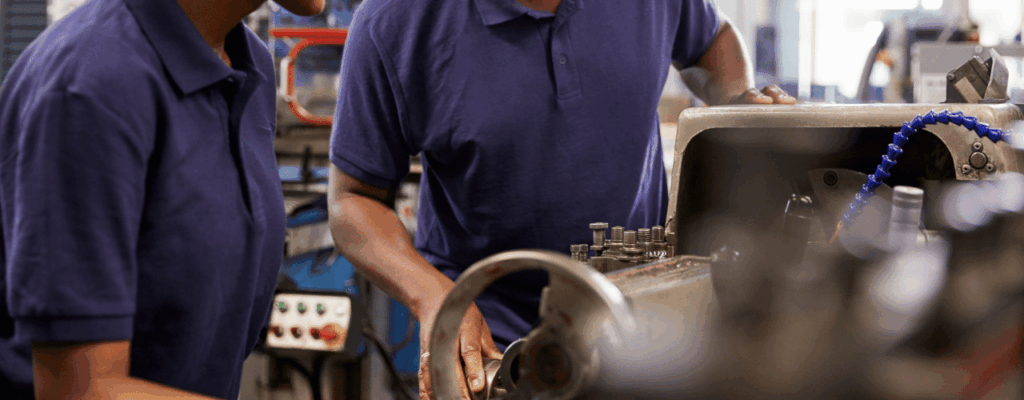

Choosing a hot foil stamping machine works best when you match the press to the work you plan to do. Focus on the finish your customers expect so your setup is easy to repeat. If you personalise leather goods, create wedding stationery, or stamp small batches for a brand launch, the route to great results starts with a simple routine that you can repeat without fuss.
Which Formats and Substrates Will You Stamp Most Often?
Start with the size you plan to stamp most. Measure the largest design area, then check the stamping surface and clearance to confirm there is room for the sheet. Smooth paper behaves differently from textured card, while leather needs more heat and pressure than coated paper. Fine lines and small typefaces become clearer when pressure is evenly applied.
How Much Volume Will You Run Each Week?
Production pace shapes the press you pick. Small batches for a design studio can run on a manual press with a compact footprint. Entry‑level tabletop presses suit hobby or sampling work, while retail production needs a press built for daily use. A hot foil stamping machine with repeatable settings helps you move from one job to the next with fewer adjustments.
How do You Control Temperature and Pressure?
Heat, pressure, and time work together. On textured stocks, a little more contact time helps the foil sit into the surface. On smoother paper, shorter contact time with crisp pressure gives a sharp edge. The right hot foil stamping machine lets you fine‑tune in small steps.
Add simple habits that keep results consistent:
- Warm up the plate fully before the first pull so the whole image stamps evenly
- Log settings for each stock and foil in one place so repeats start closer to target
- If the edges look pale, add a thin sheet rather than increasing pressure at once
Which Dies and Foils Will You Use First?
Brass and magnesium plates are the best hot foil dies to use, though they respond differently to heat. Brass holds detail, while magnesium suits larger shapes at a lower cost per plate. Foil choice matters too. Pigment foils give flat colour with low shine, metallic foils add gloss that catches the light, ideal for a logo or border, while holographic foils suit more limited runs or security-enhancing accents.
With the right hot foil stamping machine, plates reach the optimal temperature evenly and results stay predictable across both die types.
How Quickly Can You Set Up and Start a New Project?
Time saved during setup adds back to your day.
Here are quick checks that speed up alignment on a new job:
- Check how the press handles plate changes
- Make sure you can see and reach the stamping surface without straining
- Confirm that clamps and locks hold position without drifting
Follow a routine. Bring stock to temperature, run three or four test prints, then pick the best one, logging the date and your key settings.
What Space and Power do You Need for Installation?
Presses sit best in a clean, well‑lit corner with firm floor support. Consider how you stand and where you place blanks and finished products. Also, make sure to plan cable runs so your feet don’t snag.
- Footprint: measure the machine and the working area, then check the route through doors
- Supply: confirm the power you need with your electrician
- Handling: plan how the press will be moved into position and how you will secure it
The hot foil stamping machine you choose will benefit from a stable base and a tidy layout, which keeps you focused on making the right impression in your work.
What Budget Should You Plan Beyond the Unit Price?
The press is the heart of the setup, but the rest of the kit matters too. Add a few starter foils in the shades you want most. Set aside time for training and a follow‑up visit after the first month. The hot foil stamping machine pays back faster when the surrounding workflow is tidy and repeatable.
What Does a Sensible First Month Look Like?
Pick three standard products and focus on those until you settle into a routine. Run short batches and note any the common errors you see to fix the cause at the source. You will learn the feel of the surface, the rhythm of the press, and which stocks need a different touch. Over time, your hot foil stamping machine becomes part of your muscle memory when you set a clear limit on volume at the start.
Which Metallic Elephant Press Fits Your Work?
Here is a quick guide to our current range, with typical uses so you can match a model to your products and materials.
- KSF 1: Portable bench press suited for personalising small goods. Best for notebooks, small leather items, dog collars and phone cases
- KSF 1 Mini: A compact version of the KSF 1 that’s best for tight workspaces
- KSF 2: Built for larger pieces behind the counter or in a workshop. Best for tote bags, wash bags, satchels and cartridge bags
- KSF 3: Platen press favoured by wedding and social stationery printers. Best for wedding stationery, social stationery, photo albums and printing on acrylics
- KSF 4: Covers both product personalisation and bigger items in one footprint. Best for bags, jewellery boxes, packaging and trainers
- Pneumatic Presses: For long runs or larger items. Best for plastic components, high‑volume work, debossed areas and large‑format graphics
How Can we Help You Choose the Right Press?
When you are ready to compare models, book a chat with us. We will talk you through setup, support, and future upgrades.
If you want guidance that relates to your artwork and your goals, speak with us about a hot foil stamping machine that fits your studio.